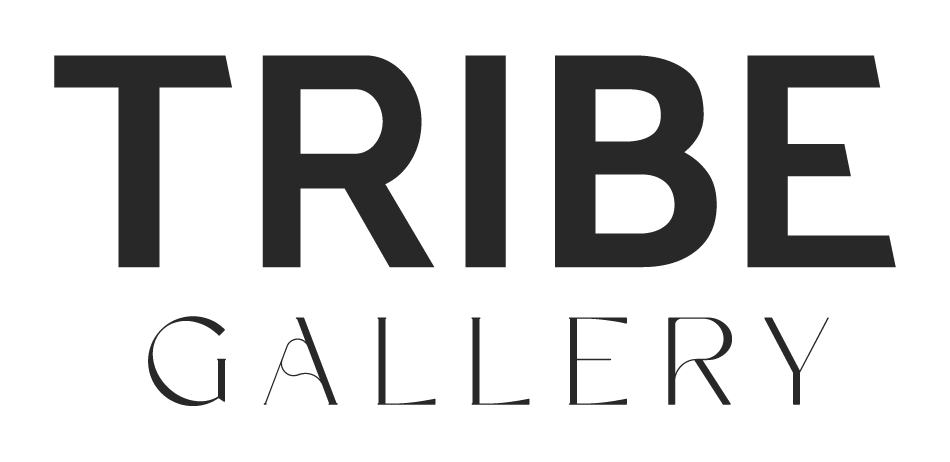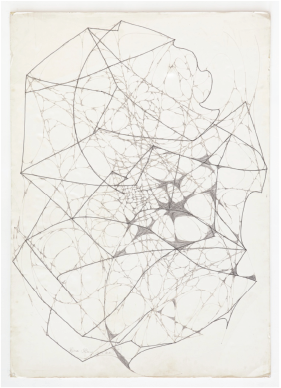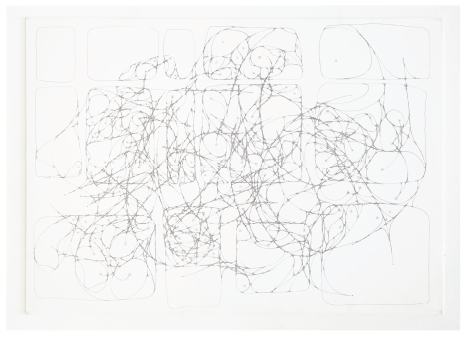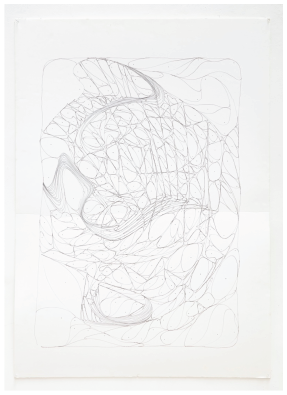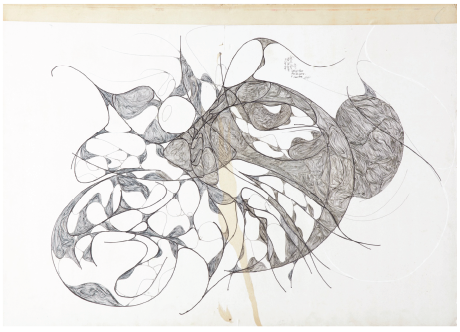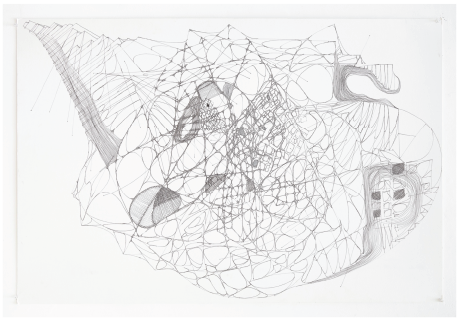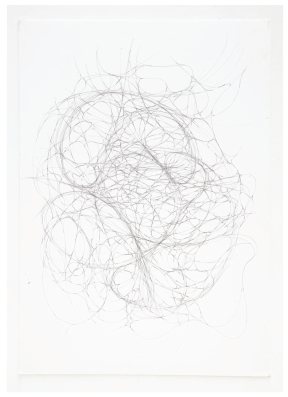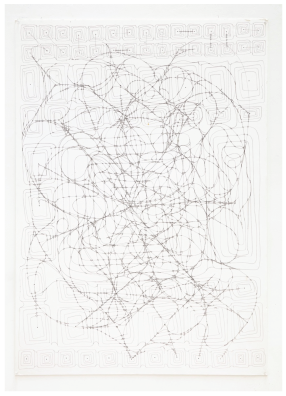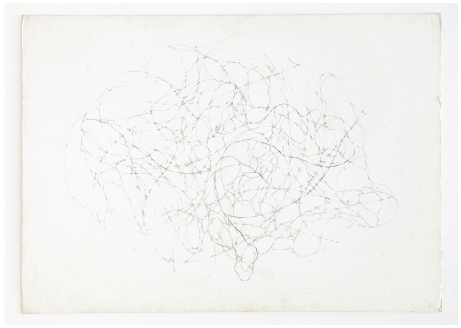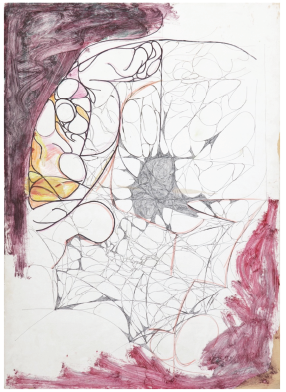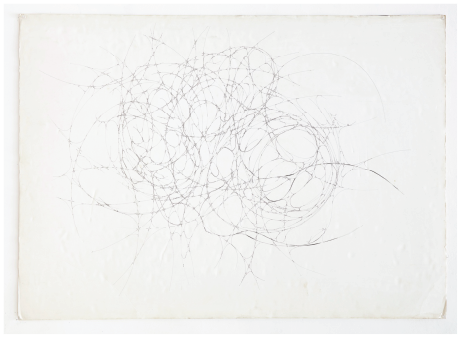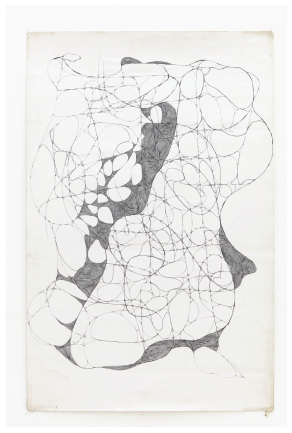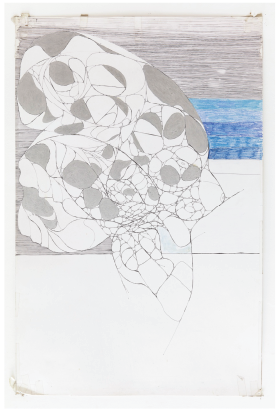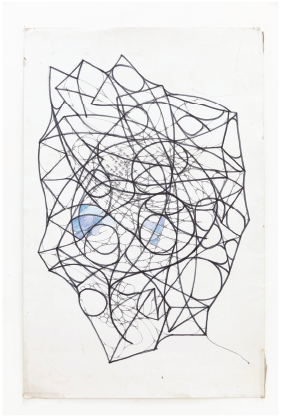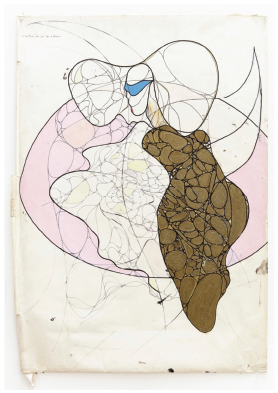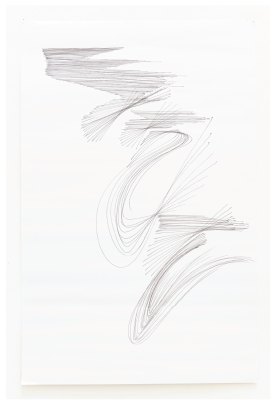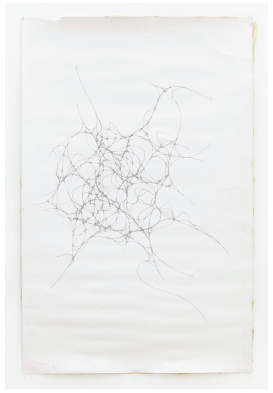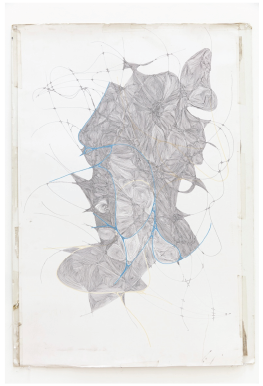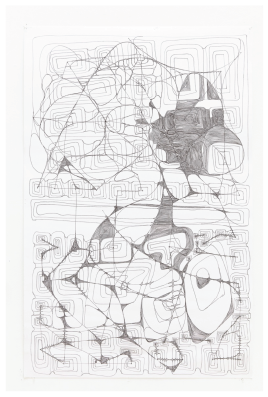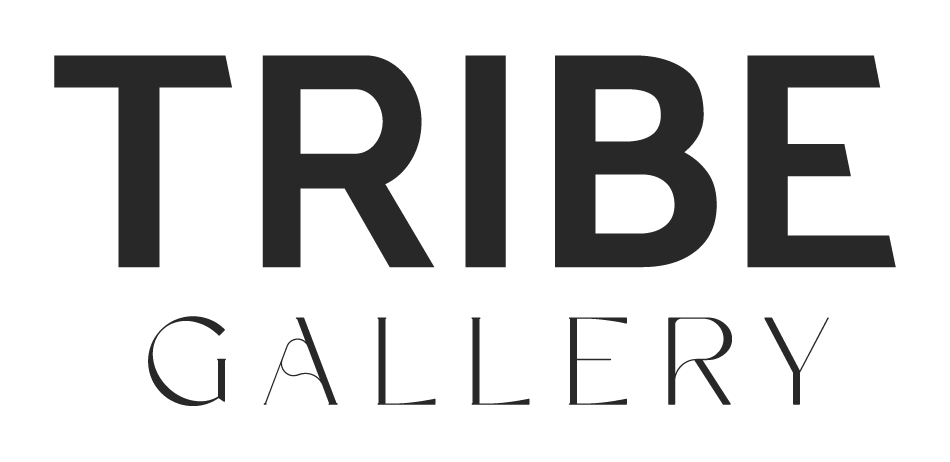Exhibition
KEZIAH JONES
October 07 – November 29, 2025
23 Rue de Montchoisy, 1207 Genève
Geneva
THE INVISIBLE LADDER
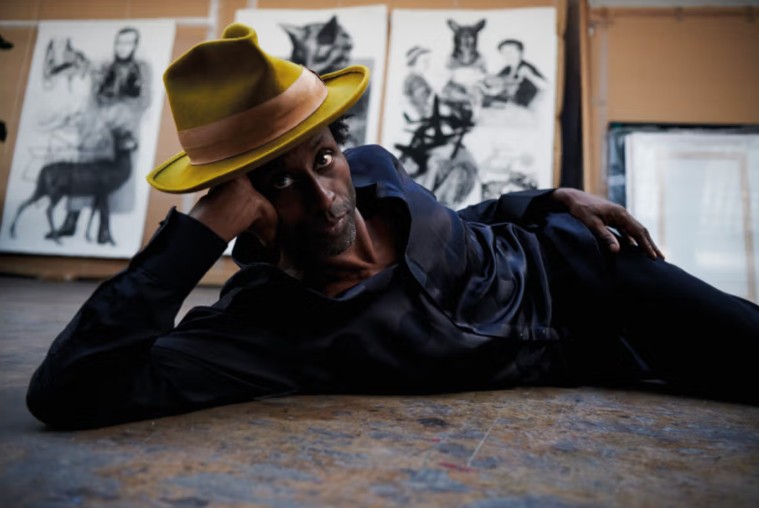
Photo credit: Pénélope Caillet.
A solo exhibition by Keziah Jones
Curated by TRIBE Gallery, Geneva
“I don’t draw to decorate. I draw to translate what I live. Just like I never play a song the same
way twice, I never repeat a line.”
– Keziah Jones
What if a brushstroke was a chord? What if silence was a canvas? What if the act of drawing raw, rhythmic, physical was not so different from playing a guitar? Keziah Jones is not a visual artist because he “also draws.” He is a visual artist because he creates from the same force that drives his music: urgency, breath, instinct, truth. As with his musical practice famously dubbed blufunk, a self-invented blend of Yoruba rhythms, punk attitude, and stripped-down funk his drawing is a form of improvisation, of embodiment, of lived philosophy. He does not illustrate his songs. He becomes the line. For over two decades, Keziah Jones has drawn privately, in the margins of his musical life to find visual answers to musical questions. These drawings were never meant for the public. They were confidants, companions, fragments of an inner cartography. Only close friends had glimpsed them, until now. With The Invisible Ladder, TRIBE Gallery presents for the first time in Geneva and in Switzerland a selection of works that are as magnetic and unpredictable as his stage performances. Each piece is born in the moment, no rehearsal, no draft, no repetition. Presence, intuition, truth.
A Rhythm in the Line.
Throughout his musical career, from Blufunk Is a Fact! (1992) to Captain Rugged (2013), Jones
has used repetition not as a method, but as resistance. His concerts are known for evolving night
after night, each version of a song responding to the room, the crowd, the energy. “I never play
a song the same way twice”, he says. “Because I’m not the same person. And neither are you.”
This belief, that truth is fluid, that identity is performed, not possessed is embedded in his
drawing practice.
The line is everything. It twists, loops, scratches, hovers. It’s muscular and nervous, soft and
sharp. Sometimes we find figures, other times not. There are eyes, limbs, gods, guardians,
tongues, ghosts, lovers or perhaps just shadows. Like a melody improvised on stage, these
works ask not to be deciphered, but felt. They call for attention, for resonance.
And just like his music, they stay with you long after the moment ends.
Climbin the Invisible Ladder
The title evokes a journey without visible steps, a structure you feel rather than see. It is both
ascent and bridge, a way of moving between worlds.
Born in Lagos, raised within the Yoruba tradition, shaped by years in London, now living in Paris,
Keziah embodies a fluid identity that refuses to be flattened. His work reclaims the narrative of
Africa today, inventive, urban, uncompromising, far from the reductive clichés that persist in the
Western gaze.
When music resists, drawing takes over. It becomes a place of exile and refuge, a gesture
powerful enough to affirm his singularity and resist the erasure of difference. Lines unfold like
harmonies, ink marks like scores. In the quiet of drawing, he finds the space to return to melody,
to words, to song.
A Politics of Presence
Keziah Jones has never sought to fit industry expectations. He has never chased markets or leaned into the exoticism so often projected onto African artists. Instead, he occupies the margins — a place of freedom, vulnerability, and resistance. His art doesn’t deliver slogans; it holds contradictions. It insists on being seen without compromise.
TRIBE Gallery, a space for the Untamed
In TRIBE Gallery, Keziah Jones finds more than a venue. He finds resonance. A shared belief that art is not just something to be shown, but something to be lived. To enter The Invisible Ladder is to witness drawing as listening, to oneself, to history, to rhythm, to breath. These works are not sketches; they are traces of moments, maps of spirit and transformation. They ask: What happens when we stop performing identity and start improvising it? What new worlds appear when we no longer need to repeat ourselves? Each mark, like a note struck on his guitar, exists only once. And that is its power.
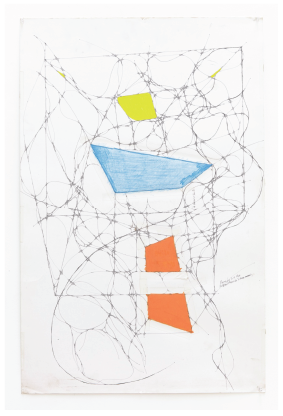
Making Love to a Muse
(As opposed to Making Love to Amuse)
Encre sur carton plume
100 x 65 cm
